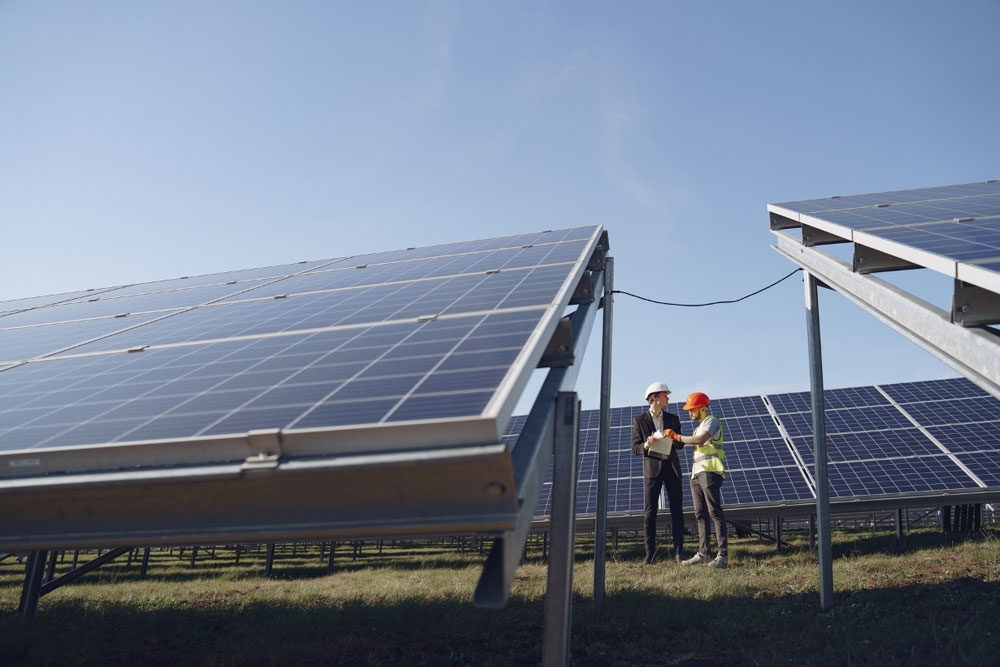A TrendForce EnergyTrend report for Q2 2022 says 56 cell manufacturers, accounting for about 80% of all cell makers, can now produce 210mm cells, representing a year-on-year growth of 51%. Moreover, 23 module makers have now adopted 600W+ technology.
As polysilicon costs keep growing, the need to increase efficiency, reduce costs and improve IRR on projects has become more pressing than ever. Large and ultra-high power PV products are advancing rapidly because of high power, efficiency, reliability and immense cost benefits.
They now account for 80% of capacity and shipments of wafers, cells, and modules and have thus become the market’s mainstream.
Trend: 23 businesses adopt 600W+ as high-power modules become focus of tenders
TrendForce tender figures show that the ratio of large 182 & 210mm (including 210R) modules being bought and used has increased significantly. An analysis of the announced 89.4GW of PV module tenders indicates that about 72.2GW (77%) have no specific size requirements and merely want power of 530W and above. 17.2GW of tenders have specific module size requirements, of which large (182 & 210mm) variations account for 13.97GW, or 81.2%.
Large high-power modules are becoming mainstream, particularly in ground power stations. Large distributed PV products are also expected to grow rapidly in the thriving market.
The capacity of 210mm wafers rose 172%, with the share of large-sized wafers exceeding 80%
Newly established capacity during the first half of 2022 was mostly compatible with large 182 & 210mm wafers. The TrendForce EnergyTrend survey points to large wafers (182 & 210mm) reaching 422.6GW of capacity this year, a ratio of 83.1%, of which 210mm wafers account for 164GW (32.25%), a year-on-year increase of 172% (60.1GW in 2021). Large wafers (182 & 210mm) will have market share of 89.97% by 2023, with 210mm accounting for 274.6GW, or 46.35%.
Progress in wafer thinning has exceeded initial expectations, yielding a sizable reduction in wafer consumption. Businesses faced with stubbornly high prices of raw materials are constantly reducing their use of wafers by rapidly switching from 165μm to 160/155μm, and will continue the move toward 150μm. Wafer consumption is thus expected to drop from 2.7-2.8g/W in 2021 to about 2.6g/W.
80% of businesses can produce 210mm cells under accelerated iteration between old and new capacity
The deployment of large 182 & 210mm (including 210R) cells is steadily falling in line with business’ capacity upgrades and iterations, as well as their shift in demand. According to the TrendForce study, the combined capacity of 182 & 210mm (including 210R) is now about 82.5%, while large cells (182 & 210mm) are likely to reach capacity of 593.25GW in 2023, and total capacity of 210mm cells will possibly reach 380.4GW and market share of 57.59%.
Large modules accounted for nearly 80% of shipments in Q1 2022
Major module makers generated combined shipments of 34.31GW in Q1 2022, large modules (182 & 210mm) accounting for about 27.26GW, or 79%. Falling demand for M6 and smaller modules is reflected in a pick-up in the shipment of large modules. Major modules makers are expected to ship a total of 203-230GW throughout 2022, and shipments of 210mm modules (including 210R) will rise rapidly.
210 + N-Type technology has been on the way
As PERC is reaching the cut-off point of efficiency improvement and the cost of materials, transportation and land increases, a further improvement in conversion efficiency, reduction in system costs and acceleration in iteration and upgrades for N-type technology are becoming essential for PV businesses seeking competitive advantage. Thus, 210mm products emerged, and adding up any advanced technology could be possible thanks to the openness and extensive compatibility.
Last month, Trina Solar announced capacity expansion in Xining Plant, focusing on the new N-type and 210 technology, enabling the company to create increased value for customers as a major supplier of main materials. Module power output will be expected to reach 700W and above with the combination of N-type and 210 technology.
The collocation of large-sized products and advanced technology has opened up additional space for efficiency improvement and cost reduction. 210mm + N-type continue to optimize LCOE. It may also further increase the ratio of PV in renewable energy, and serve the cause of carbon peaking and neutrality goals.
















Comments